2022
UNSEEN, UNSAID, UNHEARD [PROCESS BOOK]
Due to the Taliban’s resurgence and the withdrawal of U.S. forces in 2021, Afghan news once again dominates the headlines. More and more people associate Afghanistan with the Taliban, terrorism, 9/11, the Islamic State, the “graveyard of empires”; when one speaks of Afghan women, most only think of “ghosts under burqa.”
For a long time, the Third World has experienced unimaginable warfare, physical tragedy, structural collapse, and epistemic violence. Media coverage has made these acts of violence a mainstream impression, and Afghan women have thus lost their true voices and images.
Due to the Taliban’s resurgence and the withdrawal of U.S. forces in 2021, Afghan news once again dominates the headlines. More and more people associate Afghanistan with the Taliban, terrorism, 9/11, the Islamic State, the “graveyard of empires”; when one speaks of Afghan women, most only think of “ghosts under burqa.”
For a long time, the Third World has experienced unimaginable warfare, physical tragedy, structural collapse, and epistemic violence. Media coverage has made these acts of violence a mainstream impression, and Afghan women have thus lost their true voices and images.
 Book cover (words from news report, filtered and listed in order of frequency)
Book cover (words from news report, filtered and listed in order of frequency)Objectives
- Provide the reader with a true picture of Afghan women
- Critique the violence inflicted on Afghan women by western mainstream media
- Address fundamental issues
- Advocate the new voice of Afghan contemporary art by female artist
- Cover some of Afghan history, religion, and gender geopolitics
References
- The two faces of Afghan women: Oppressed and exotic by Shahnaz Khan
-
Securing Afghan Women: Neocolonialism, Epistemic Violence, and the Rhetoric of the Veil by
Kevin J. Ayotte and Mary E. Husain
- Afghanistan in the cinema by Mark Graham
- Colonial Fantasies : Towards a Feminist Reading of Orientalism by Yegenoglu, Meyda
- The Impact of U.S. Intervention on Afghan Women's Rights by Sonali Kolhatkart
- Progress and inequities in maternal mortality in Afghanistan (RAMOS-II): a retrospective observational study
- Where giving birth is a forecast of death: maternal mortality in four districts of Afghanistan, 1999–2002
- Gender, Place & Culture: A Journal of Feminist Geography by Jennifer Fluri
-
Gender Roles in Agriculture: The Case of Afghanistan
- After the withdrawal, U.S. museums need to tell a richer story about Afghanistan
- The Price Of Inequality: The Dangerous Rural-Urban Divide In Afghanistan by Tamim Asey
-
Skateboarding won’t ‘save’ Afghan girls by Sahar Ghumkhor
-
Media and Intervention: Examining
Representations of Afghan Women in The New York Times by Azeta Hatef & Rose LuqiuD - Women in Islam by Dr. Zieba Shortish Shamley
 Text Selection
Text SelectionI paid attention to the ethnicity and religion of authors because in this specific topic, Afghan female authors, or people with Islamic cultural/religious backgrounds, MUST HAVE A SAY.
The research began with a famous portrait, Afghan girl, a 1984 photo of Sharbat Gula. I read The Kite Runner and A Thousand Splendid Suns, I’ve seen Afghan feminist organizations, and these brave Afghan women are veteran-level warriors. In that portrait, Gula looked different––exotic, innocent, defenseless. She seems like a terrified girl who waits for her dad during a zombie wave but doesn’t have a stuffed animal in her hand.
The photo struck me and made me dive deeper. I learned about neocolonialism and media strategies that victimize Afghan women to justify invasion wars and make developed country citizens feel better. After that, on multiple quantitative levels, economically, geographically, and agriculturally, I identified the crisis Afghanistan experienced.
Textual analysis
I textually analyzed articles and reports that mentioned Afghan women and digitally visualized the result. I expected the top words to be gender-biased, portraying Afghan women like “ghosts under burqa,” but the results mainly highlighted issues fundamental to Afghan women's lives, such as education and pregnancy. What amazes me is how powerful information visualization can be in supporting a complex, humanistic study and enhancing comprehension.
SECTION I: MEDIA INTERVENTION


Criticism of Western media exploiting the 'burqa freedom' and ignoring Afghan women’s real identities
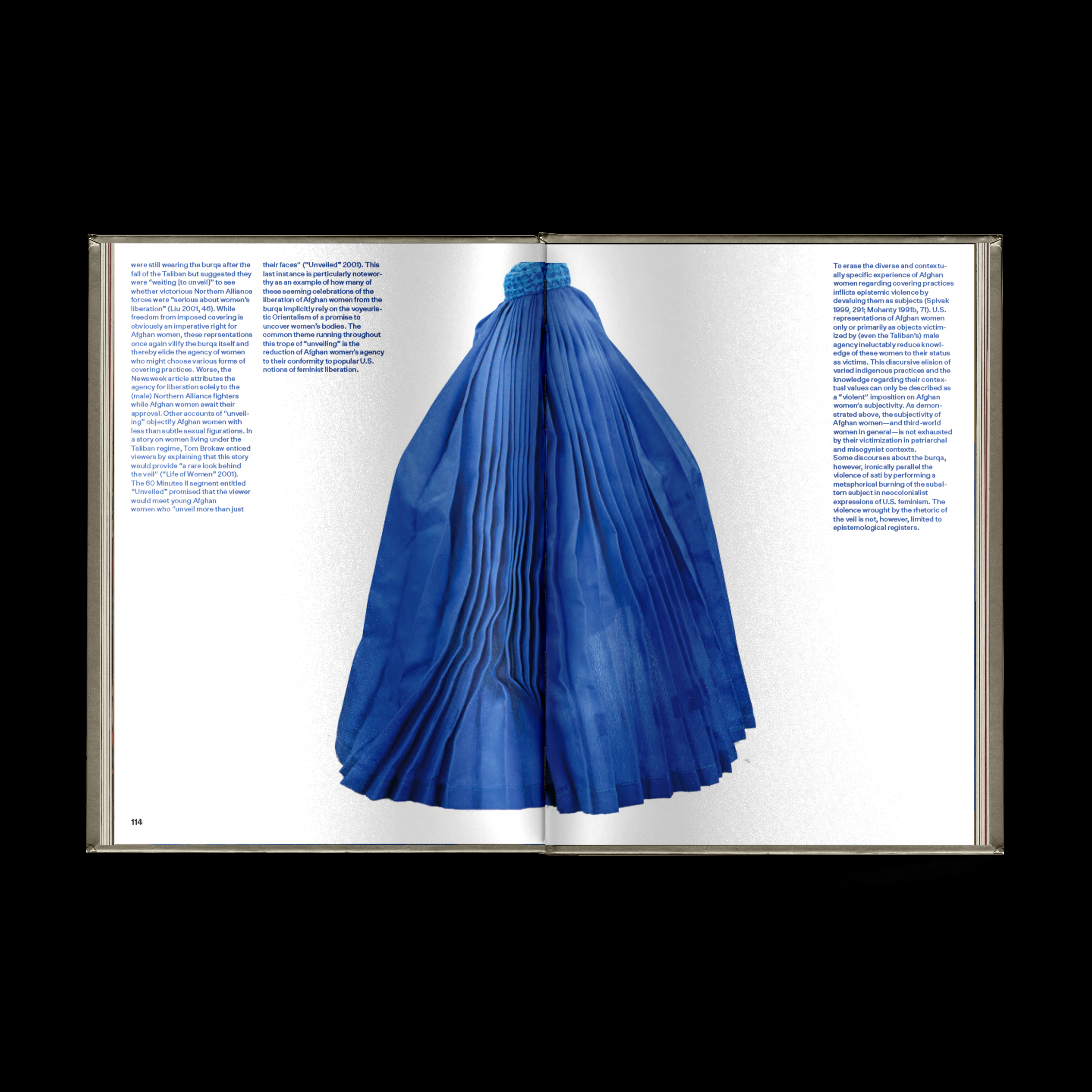
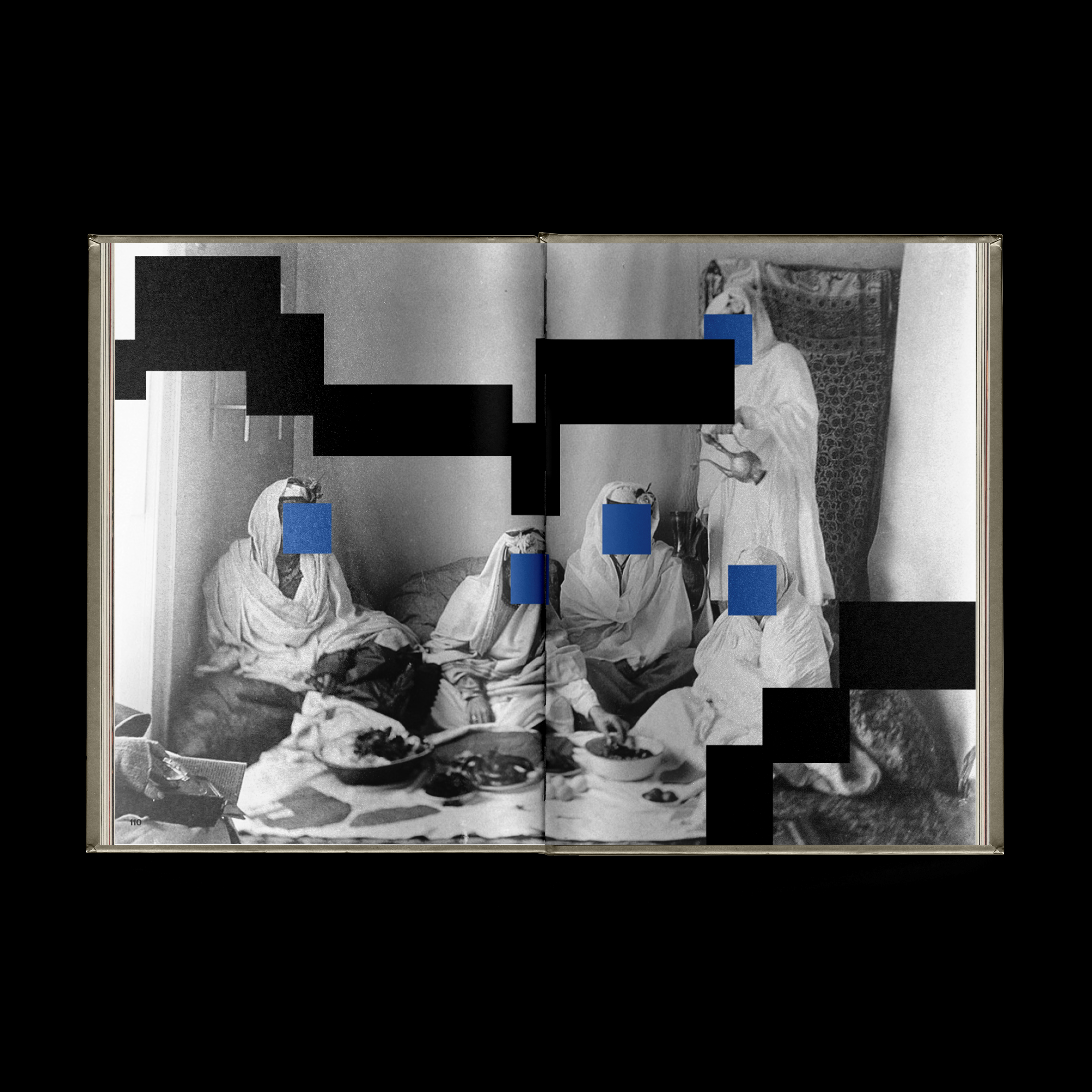
SECTION II REAL AFGHANISTAN
Collages that expose the wealth gap, dictatorship
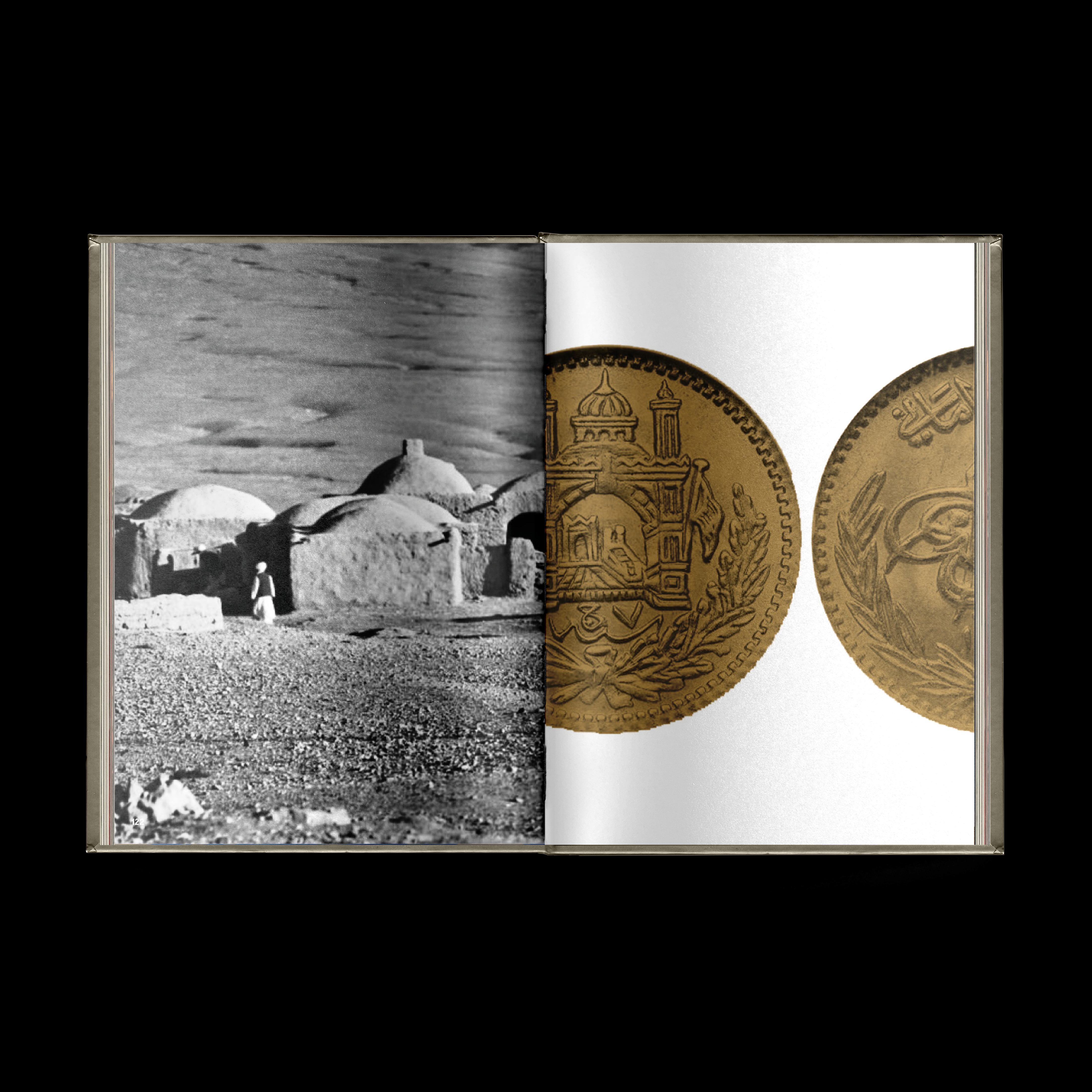
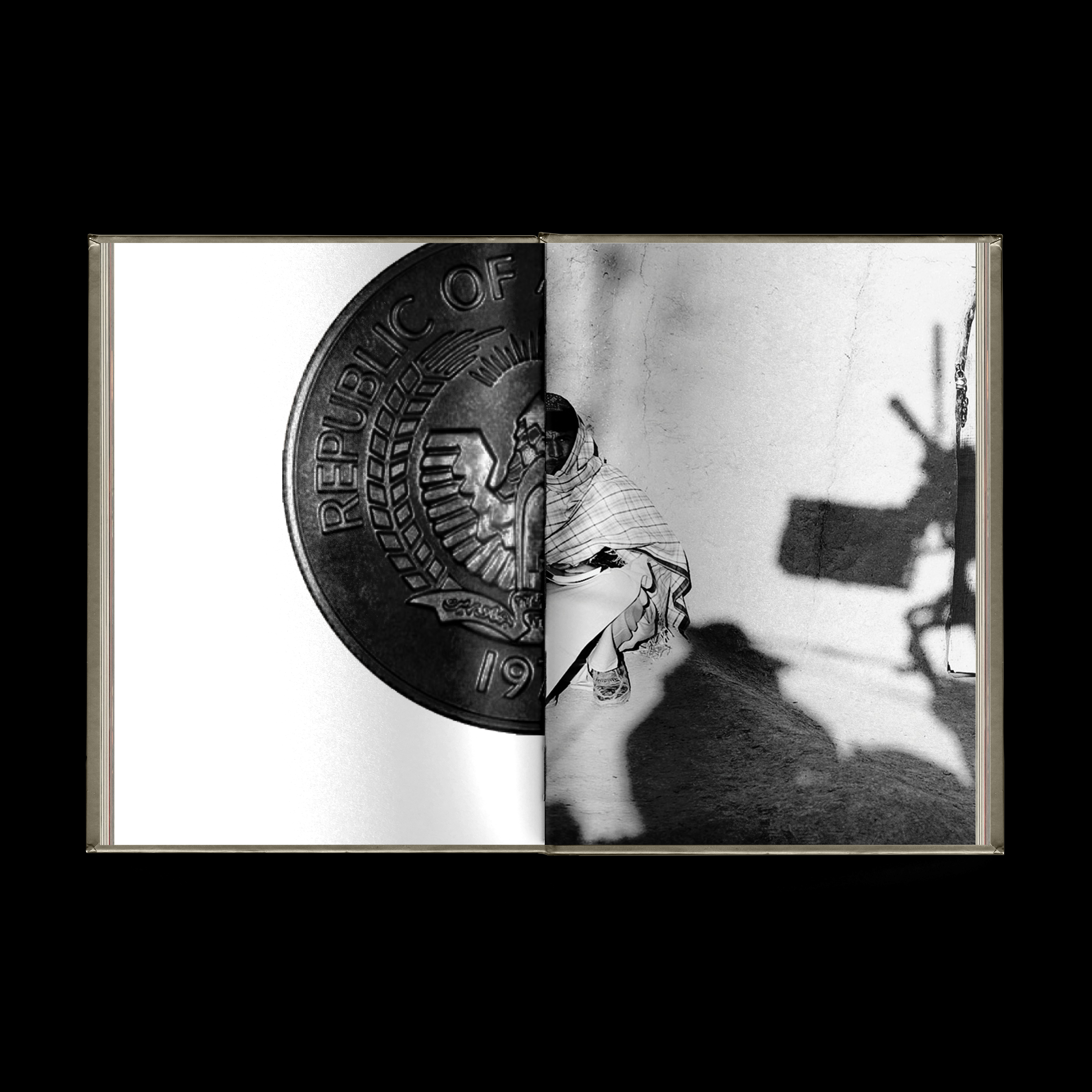
Afghanistan as an Islamic country
Quotes from Qu’ran
Quotes from Qu’ran

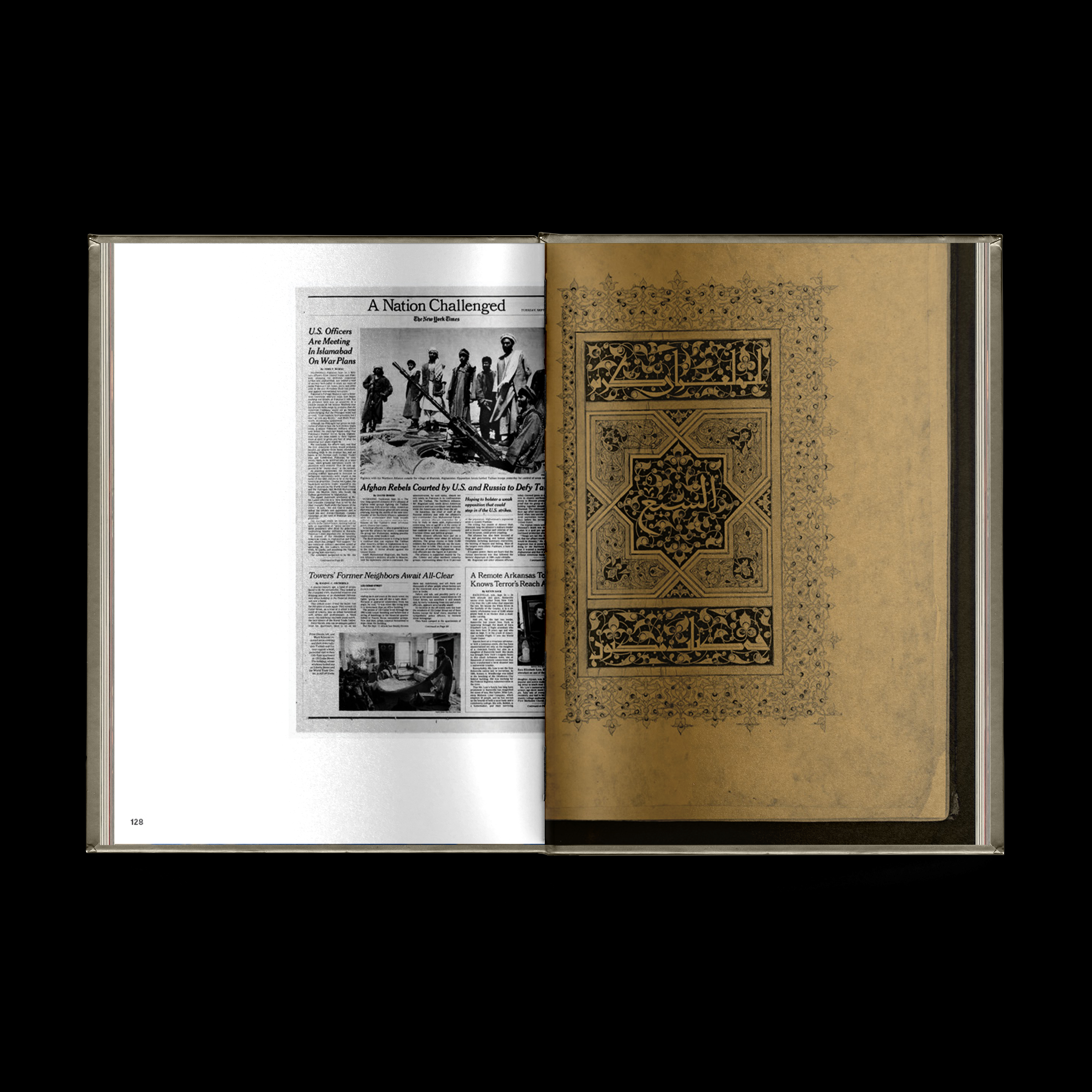
SECTION III
CONTEMPORARY VOICE
Osama, 2003
The film follows a preteen girl living in Afghanistan under the Taliban regime who disguises herself as a boy, Osama, to support her family. It was the first film to be shot entirely in Afghanistan since 1996, when the Taliban regime banned the creation of all films.
The film follows a preteen girl living in Afghanistan under the Taliban regime who disguises herself as a boy, Osama, to support her family. It was the first film to be shot entirely in Afghanistan since 1996, when the Taliban regime banned the creation of all films.


Lida Abdul
Born in Kabul, Afghanistan in 1973, and resides there now. Abdul lived in Germany and India as a refugee after she was forced to leave Afghanistan after the former-Soviet invasion. Her work fuses the tropes of ‘Western” formalism with the numerous aesthetic traditions.
Born in Kabul, Afghanistan in 1973, and resides there now. Abdul lived in Germany and India as a refugee after she was forced to leave Afghanistan after the former-Soviet invasion. Her work fuses the tropes of ‘Western” formalism with the numerous aesthetic traditions.


ENDING
Infographics showing historical timeline of Afghan women
“History is a wheel, for the nature of man is fundamentally unchanging. What has happened before will perforce happen again.” — Archmaester Rigney
“History is a wheel, for the nature of man is fundamentally unchanging. What has happened before will perforce happen again.” — Archmaester Rigney


POSTER DESIGN
